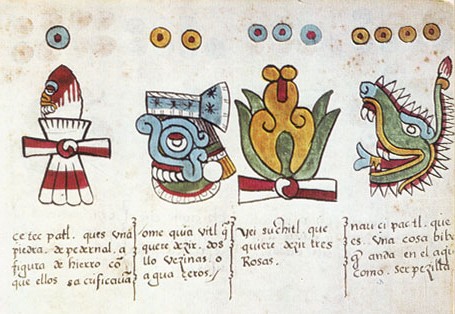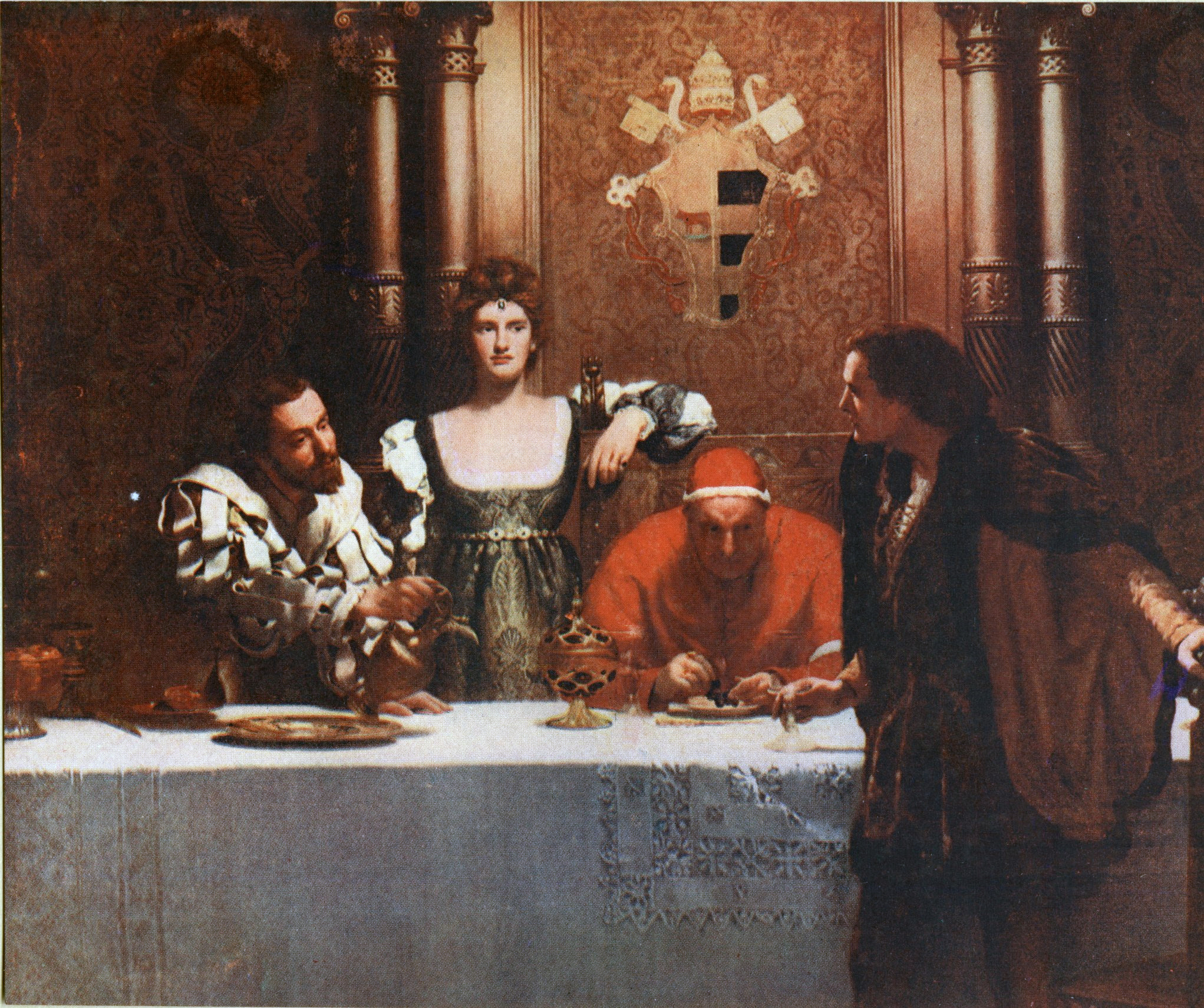|
Tlāhuizcalpantecuhtli
Tlāhuizcalpantēcuhtli is a principal member of the pantheon of gods within the Aztec religion, representing the Morning Star Venus.Townsend (1992): p. 118. The name comes from the Nahuatl words "dawn" and "lord".''Nahuatl Dictionary.'' (1997). Wired Humanities Project. University of Oregon. Retrieved September 1, 2012, frolink Tlahuizcalpantecuhtli is one of the thirteen Lords of the Day, representing the 12th day of the Aztec trecena. Origin Story Tlahuizcalpantecuhtli plays a significant role in the creation of Tonatiuh, the Fifth Sun in the Aztec creation narrative. Motolinía's ''Memoriales'', and the Codex Chimalpopoca relate that the Toltec ruler Topiltzin Quetzalcoatl became the morning star when he died. Quetzalcoatl throws himself into a bonfire after adorning his regalia. Once he started burning, his ashes were lifted and various beautiful birds were sacrificed until Quetzalcoatl's spirit leaves his heart as a star and becomes a part of the sky. The ''Ann ... [...More Info...] [...Related Items...] OR: [Wikipedia] [Google] [Baidu] |
Codex Telleriano-Remensis
The ''Codex Telleriano-Remensis'', produced in sixteenth-century New Spain, Mexico on European paper, is one of the finest surviving examples of Aztec manuscript painting. It holds the earliest written evidence of earthquakes in Americas, the Americas. Its Latin language, Latinized name comes from Charles-Maurice Le Tellier, Charles-Maurice Le ''Tellier'', Roman Catholic Archdiocese of Reims, archbishop of ''Reims'', who had possession of the manuscript in the late 17th century.Quiñones Keber (1995): p. 155. The codex is held at the in Paris. Contents The ''Codex Telleriano-Remensis'' is divided into three sections. The first section, spanning the first seven pages, describes the 365-day solar calendar, called the ''xiuhpohualli''. The second section, spanning pages 8 to 24, is a ''tonalamatl'', describing the 260-day ''tonalpohualli'' calendar. The third section is a history, itself divided into two sections which differ stylistically. Pages 25 to 28 are an account of human m ... [...More Info...] [...Related Items...] OR: [Wikipedia] [Google] [Baidu] |
Huītzilōpōchtli
Huitzilopochtli (, ) is the Solar deity, solar and war deity of sacrifice in Aztec religion. He was also the patron god of the Aztecs and their capital city, Tenochtitlan. He wielded Xiuhcoatl, the fire serpent, as a weapon, thus also associating Huitzilopochtli with fire. The Spanish Empire, Spaniards recorded the deity's name as ''Huichilobos''. During their discovery and conquest of the Aztec Empire, they wrote that Human sacrifice in Aztec culture, human sacrifice was common in worship ceremonies. These took place frequently throughout the region. When performed, typically multiple victims were sacrificed per day at any one of the numerous temples. Etymology There continues to be disagreement about the full significance of Huītzilōpōchtli's name. Generally it is agreed that there are two elements, "hummingbird" and "left hand side." The name is often translated as "Left-Handed Hummingbird" or "Hummingbird of the South" on the basis that Aztec mythology, Aztec cosmology ... [...More Info...] [...Related Items...] OR: [Wikipedia] [Google] [Baidu] |
Austin, Texas
Austin ( ) is the List of capitals in the United States, capital city of the U.S. state of Texas. It is the county seat and most populous city of Travis County, Texas, Travis County, with portions extending into Hays County, Texas, Hays and Williamson County, Texas, Williamson counties. Incorporated on December 27, 1839, it is the Metropolitan statistical area, 26th-largest metropolitan area in the United States, the List of United States cities by population, 13th-most populous city in the United States, the List of cities in Texas by population, fifth-most populous city in the state after Houston, San Antonio, Dallas, and Fort Worth, and the second-most populous state capital city after Phoenix, Arizona. It has been one of the fastest growing large cities in the United States since 2010. Downtown Austin and Downtown San Antonio are approximately apart, and both fall along the Interstate 35 in Texas, I-35 corridor. This combined metropolitan region of San Antonio–Austin met ... [...More Info...] [...Related Items...] OR: [Wikipedia] [Google] [Baidu] |
University Of Arizona Press
The University of Arizona Press, a publishing house founded in 1959 as a department of the University of Arizona, is a nonprofit publisher of scholarly and regional books. As a delegate of the University of Arizona to the larger world, the Press publishes the work of scholars wherever they may be, concentrating upon scholarship that reflects the special strengths of the University of Arizona, Arizona State University, and Northern Arizona University. The Press publishes about fifty books annually and has some 1,400 books in print. These include scholarly titles in American Indian studies, anthropology, archaeology, environmental studies, geography, Chicano studies, history, Latin American studies, and the space sciences. The UA Press has award-winning books in more than 30 subject areas. The UA Press also publishes general interest books on Arizona and the Southwest borderlands. In addition, the Press publishes books of personal essays, such as Nancy Mairs's ''Plaintext'' and ... [...More Info...] [...Related Items...] OR: [Wikipedia] [Google] [Baidu] |
Tucson
Tucson (; ; ) is a city in Pima County, Arizona, United States, and its county seat. It is the second-most populous city in Arizona, behind Phoenix, Arizona, Phoenix, with a population of 542,630 in the 2020 United States census. The Tucson metropolitan statistical area had 1.043 million residents in 2020 and forms part of the Tucson-Nogales combined statistical area. Tucson and Phoenix anchor the Arizona Sun Corridor. The city is southeast of Phoenix and north of the United States–Mexico border It is home to the University of Arizona. Major incorporated suburbs of Tucson include Oro Valley, Arizona, Oro Valley and Marana, Arizona, Marana northwest of the city, Sahuarita, Arizona, Sahuarita south of the city, and South Tucson, Arizona, South Tucson in an enclave south of downtown. Communities in the vicinity of Tucson (some within or overlapping the city limits) include Casas Adobes, Arizona, Casas Adobes, Catalina Foothills, Arizona, Catalina Foothills, Flowing Wells, A ... [...More Info...] [...Related Items...] OR: [Wikipedia] [Google] [Baidu] |
John Bierhorst
John is a common English name and surname: * John (given name) * John (surname) John may also refer to: New Testament Works * Gospel of John, a title often shortened to John * First Epistle of John, often shortened to 1 John * Second Epistle of John, often shortened to 2 John * Third Epistle of John, often shortened to 3 John People * John the Baptist (died ), regarded as a prophet and the forerunner of Jesus Christ * John the Apostle (died ), one of the twelve apostles of Jesus Christ * John the Evangelist, assigned author of the Fourth Gospel, once identified with the Apostle * John of Patmos, also known as John the Divine or John the Revelator, the author of the Book of Revelation, once identified with the Apostle * John the Presbyter, a figure either identified with or distinguished from the Apostle, the Evangelist and John of Patmos Other people with the given name Religious figures * John, father of Andrew the Apostle and Saint Peter * Pope John (disambigu ... [...More Info...] [...Related Items...] OR: [Wikipedia] [Google] [Baidu] |
Xiuhtecuhtli
In Aztec mythology, Xiuhtēcuhtli ("Turquoise Lord" or "Lord of Fire"), was the god of fire, day and heat. In historical sources he is called by many names, which reflect his varied aspects and dwellings in the three parts of the cosmos. He was the lord of volcanoes, the personification of life after death, warmth in cold (fire), light in darkness and food during famine. He was also named Cuezaltzin ("flame") and Ixcozauhqui , and is sometimes considered to be the same as Huehueteotl ("Old God"), although Xiuhtecuhtli is usually shown as a young deity.Matos Moctezuma & Solis Olguín 2002, p.476. His wife was Chalchiuhtlicue. Xiuhtecuhtli is sometimes considered to be a manifestation of Ometecuhtli, the Lord of Duality, and according to the Florentine Codex Xiuhtecuhtli was considered to be the father of the Gods, who dwelled in the turquoise enclosure in the center of earth.Matos Moctezuma 1988, p.94. Xiuhtecuhtli-Huehueteotl was one of the oldest and most revered of the indigeno ... [...More Info...] [...Related Items...] OR: [Wikipedia] [Google] [Baidu] |
Tōnalpōhualli
The (), meaning "count of days" in Nahuatl, is a Aztec, Mexica version of the 260-day calendar in use in pre-Columbian Mesoamerica. This calendar is solar and consists of 20 13-day () periods. Each is ruled by a different deity. Graphic representations for the twenty day names have existed among certain ethnic, linguistic, or archaeologically identified peoples. Description The term for the Aztecs, Aztec day signs, ''tōnalpōhualli'', comes from the root word ''Tona'' which means to give light or heat. T''ōnalpōhualli'' refers to the count of the days, made up of 20 day signs and a 260 day cycle. In Aztec society there were multiple intertwining calendars, the ''tōnalpōhualli'', and the ''xiuhpōhualli'' which refers to the solar year of 365 days. The ''xiuhpōhualli'' was divided into eighteen twenty day months, and then an extra five days at the end of the cycle. Each day denoted by a different day sign and number, the double calendars were intertwined so that every ... [...More Info...] [...Related Items...] OR: [Wikipedia] [Google] [Baidu] |
Codex Borbonicus (p
The Codex Borbonicus is an Aztec codex written by Aztec priests shortly before or after the Spanish conquest of the Aztec Empire. It is named after the Palais Bourbon in France and kept at the Bibliothèque de l'Assemblée Nationale in Paris. The codex is an outstanding example of how Aztec manuscript painting is crucial for the understanding of Mexica calendric constructions, deities, and ritual actions.Keber, Eloise Quiñones. "Borbonicus, Codex." In Davíd Carrasco (ed). ">ol 1">The Oxford Encyclopedia of Mesoamerican Cultures [vol 1/nowiki>' . : Oxford University Press, 2001 History The Codex Borbonicus is one of a very few Aztec codices that survived the colonial Spanish inquisition. When the Spanish conquistadors (led by Hernán Cortés) entered Aztec cities, they would often find libraries filled with thousands of native works. However, most of the works were destroyed during the conquest. The Codex Borbonicus was acquired in 1826 for 1,300 golds francs at auction by ... [...More Info...] [...Related Items...] OR: [Wikipedia] [Google] [Baidu] |
Borgia 53 Bottom Left
The House of Borgia ( ; ; Spanish and ; ) was a Spanish noble family, which rose to prominence during the Italian Renaissance. They were from Xàtiva, Kingdom of Valencia, the surname being a toponymic from the town of Borja, then in the Crown of Aragon, in Spain. The Borgias became prominent in ecclesiastical and political affairs in the 15th and 16th centuries, producing two popes: Alfons de Borja, who ruled as Pope Callixtus III during 1455–1458, and his nephew Rodrigo Lanzol Borgia, as Pope Alexander VI, during 1492–1503. Especially during the reign of Alexander VI, they were suspected of many crimes, including adultery, incest, simony, theft, bribery, and murder (especially murder by arsenic poisoning). Because of their grasping for power, they made enemies of the Medici, the Sforza, and the Dominican friar Girolamo Savonarola, among others. They were also patrons of the arts who contributed to the development of Renaissance art. The Borgia family stands out in his ... [...More Info...] [...Related Items...] OR: [Wikipedia] [Google] [Baidu] |
World History Encyclopedia
World History Encyclopedia (formerly Ancient History Encyclopedia) is a nonprofit educational company created in 2009 by Jan van der Crabben. The organization publishes and maintains articles, images, videos, podcasts, and interactive educational tools related to history. All users may contribute content to the site, although submissions are reviewed by an editorial team before publication. In 2021, the organization was renamed from the Ancient History Encyclopedia to World History Encyclopedia to reflect its broadened scope, covering world history from all time periods, as opposed to just ancient history. Original articles are written in English and later translated into other languages, mainly French and Spanish. Organization history The Ancient History Encyclopedia was founded in 2009 by van der Crabben with the stated goal of improving history education worldwide by creating a freely accessible and reliable history source. The nonprofit organization is based in Godalming, Unit ... [...More Info...] [...Related Items...] OR: [Wikipedia] [Google] [Baidu] |




